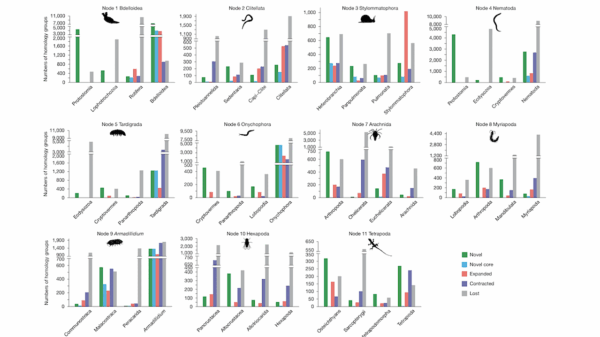Recent research has revealed that giraffes, long perceived as a single species, actually comprise four distinct species. This finding significantly alters the understanding of the world’s tallest land mammals and their conservation.
The study, conducted by a team of researchers and published in the journal Nature, outlines the genetic differences among the four species: the Northern giraffe (Giraffa camelopardalis), the Reticulated giraffe (Giraffa reticulata), the Southern giraffe (Giraffa giraffa), and Tippelskirch’s giraffe (Giraffa tippelskirchi). This classification is based on comprehensive genetic analysis and field observations across Africa.
Redefining Giraffe Conservation Efforts
The implications of this discovery are profound for conservation strategies. According to the International Union for Conservation of Nature (IUCN), giraffes are currently listed as vulnerable, with some species facing critical threats. By recognizing these distinct species, conservationists can tailor efforts to address the specific needs and challenges each one faces.
For instance, the Northern giraffe population has dwindled dramatically, with estimates suggesting fewer than 600 individuals remaining in the wild. This stark decline prompts urgent calls for targeted conservation initiatives to protect their habitat and ensure their survival.
Conversely, the Southern giraffe population is more stable, with numbers exceeding 30,000. This difference highlights the importance of species-specific assessments in conservation planning.
Scientific Collaboration and Future Research
The study’s lead researcher, Dr. Julian Fennessy, emphasizes the importance of collaborative efforts in wildlife research. “Understanding the genetic diversity among giraffes helps us identify their unique adaptations and specific threats,” he stated. This knowledge is crucial for developing effective conservation policies that can respond to the varying challenges faced by different giraffe species.
Additionally, the research encourages further exploration into the ecological roles that each giraffe species plays within their respective habitats. As the world’s ecosystems continue to face pressures from climate change and habitat loss, understanding these dynamics becomes increasingly vital.
The findings also open avenues for public engagement and education about giraffe conservation. With the public’s growing interest in wildlife preservation, particularly in Africa, there is potential for increased support for initiatives aimed at protecting these majestic creatures.
As awareness spreads, it is hoped that the recognition of four distinct giraffe species will lead to enhanced conservation efforts and a greater understanding of the ecological significance of these iconic animals. The research serves as a critical reminder of the complexities of biodiversity and the need for ongoing scientific inquiry to protect our planet’s wildlife.


































































